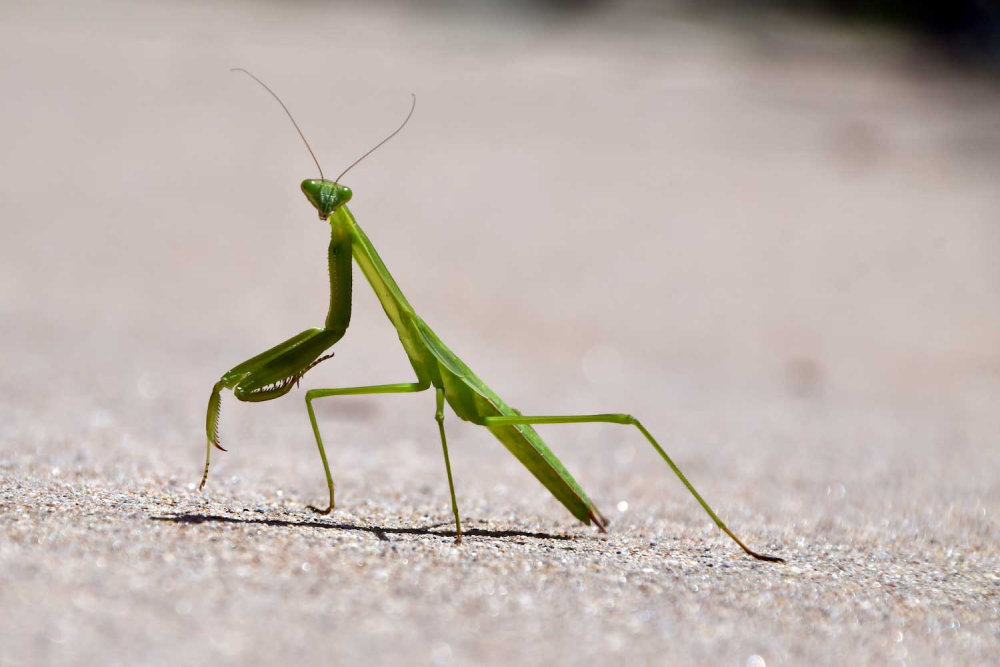A Symbol of Patience and Balance
The praying mantis is perhaps popular for its unique stance, with its elongated body and folded forelimbs resembling a posture of prayer. This iconic pose made the mantis symbol of patience, mindfulness, and balance in cultures around the world. From ancient Greece to Eastern Asia, we can meet the mantis in art and literature as a symbol of spiritual enlightenment and introspection.
Master of Camouflage
One of the most remarkable aspects of the praying mantis is its exceptional camouflage abilities. With a body that often mimics the color and texture of its surroundings, the mantis can blend seamlessly into its environment, making it a stealthy and formidable predator. Whether perched among foliage or lurking on tree bark, the mantis relies on its cryptic appearance to ambush unsuspecting prey with lightning speed.
A Deadly Hunter
Despite its serene appearance, the praying mantis is a fierce and efficient predator. Equipped with sharp mandibles and lightning-fast reflexes, it preys upon a wide range of insects, including flies, crickets, and even other mantises. Its forelimbs have spines and barbs, can swiftly grasp and immobilize its prey with precision and agility. Once captured, the hapless victim is swiftly devoured by the mantis’s voracious appetite.

Complex Mating Rituals
The mating rituals of the praying mantis are as fascinating as they are intricate. In many species, the female is popular for her cannibalistic tendencies, often consuming her mate before, during, or after copulation. While this behavior may seem macabre, it serves a crucial evolutionary purpose, providing the female with vital nutrients to produce healthy offspring. Despite the risks, male mantises approach their mates with caution and elaborate courtship displays, showcasing their strength and agility in a bid to avoid becoming a post-coital snack.
Guardians of the Garden
In addition to their role as predators, praying mantises play a vital ecological role as natural pest controllers. By preying upon insects that are considered pests in agriculture and horticulture, such as aphids and caterpillars, mantises help to maintain the delicate balance of ecosystems and reduce the need for chemical pesticides. Many gardeners and farmers welcome mantises into their fields and gardens as allies in organic pest management, recognizing their value as nature’s own pest control agents.
Conservation Challenges
Despite their iconic status and ecological importance, praying mantises face a number of threats to their survival. Habitat loss, climate change, and pesticide use are among the primary factors contributing to declines in mantis populations worldwide. In some regions, mantises are for sale in the exotic pet trade, further exacerbating their vulnerability. Conservation efforts aimed at protecting mantis habitats, reducing pesticide use, and raising awareness about the importance of these fascinating insects are essential for ensuring their long-term survival.
In Conclusion
From their graceful demeanor to their deadly hunting prowess, praying mantises are truly remarkable creatures that embody the wonders of the natural world. Whether revered as symbols of patience and balance or admired for their role as guardians of the garden, these enigmatic insects continue to captivate and inspire us with their beauty and complexity. By understanding and appreciating the vital role that mantises play in ecosystems, we can work together to conserve and protect these fascinating creatures for generations to come.









